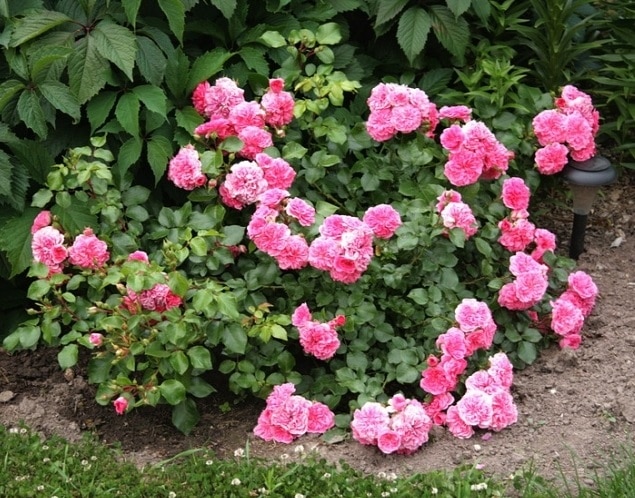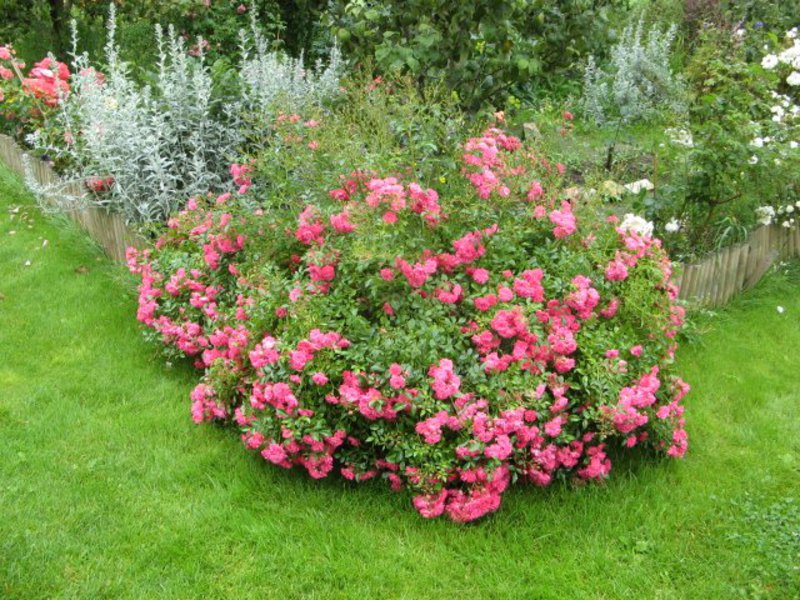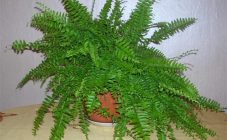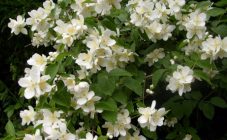More than 20 years ago, ground cover roses were singled out in a special group. Although the individual plants that entered it bear little resemblance to creeping ones. Some bushes are at least one meter high.
Their characteristic features:
- strong growth of the bush in all directions;
- dense shiny foliage, the size of a single leaf is small;
- plants bloom long and profusely.
This category of roses is hardy enough. She showed resistance to powdery mildew and black spot.
Simple, semi-double and double rose flowers are collected in a brush. They are painted in a wide variety of shades of white, pink and red. However, they are almost odorless. But this is not their most important feature. This drawback is completely invisible against the background of an incredible number of flowers on the shoots of one plant - up to 500 buds can open at the same time, and their total number for the entire season can be several thousand.
Reproduction of roses
The easiest and most common way for ground cover roses is propagation by layering. Even from one shoot, the length of which can be very impressive, it will be possible to grow several strong seedlings.
A creeping stem, which simply spreads along the ground, must be conditionally divided into several parts so that each has two buds - shoots will begin to develop from them. And one root point, under which you need to make an incision in the bark. The stem must be carefully laid in a pre-prepared groove, 10 cm deep and pinned in places with notches so that they are always at the bottom.
The sections of the stem between the incisions are slightly raised and shaped into a small arc. The buds at the top of the stem (2-3 pieces) should always be above the ground.
Next, the groove should be covered with humus-rich or fertilized soil. Watering is necessary often, not allowing the soil to dry out. If future cuttings root well by the fall, then they can be divided and transplanted into a special ridge for growing. One or two stems can be propagated on one bush.
Creeping roses can be propagated by seeds, but this is a very painstaking work, and the result will have to wait at least two years. Only then will it be possible to understand with what characteristics the seedling turned out. Therefore, breeding with seeds in everyday life is practically not practiced. It is much easier to root the shoot and get a complete plant with known characteristics.
Creeping rose: planting and care
In order for the flowering of creeping roses to be long enough and abundant, you need to correctly determine the place for planting. In the southern regions, plants should not be in the direct rays of the midday sun, delicate flower petals can be burnt.
You also need to avoid unventilated areas in deep shade, under dense foliage of trees or near walls. This can cause diseases of the root system and the cessation of its development. Even the best care of a dying plant will not restore its strength for further growth.
Best suited for planting is the western or southeastern side of the site, which the sun will illuminate in the first half of the day. And from the midday heat, the plant will be protected by the shade of trees or tall shrubs.
Planting time of seedlings of ground cover roses depends on the region. If the area is characterized by frosty and long winters, it is better to plant roses in the spring. For southern regions with short warm winters, autumn is preferable.
Loamy soils are best for creeping roses. Thanks to them, the roots of plants quite easily carry out the extraction of nutrients and oxygen to maintain the viability and development of the plant. Soils rich in sand will not work, they quickly lose moisture, freeze strongly and have few nutrients.
One of the features of preparing the soil for planting a creeping rose is the need to process and fertilize the entire area on which it will spread its branches:
- The soil should be dug to the maximum possible depth, which will remove all roots of the weeds (special attention should be paid to perennial ones).
- Pits are formed with a depth of about 70 cm, and a diameter of up to half a meter. But if the roots of the seedling are short, then the depth of the hole is made more by 20 cm.
- The soil in the pit is watered in layers, as it is filled, so the formation of voids can be avoided.
- The seedling is planted, the soil is compacted, and the rose itself is spud.
- After the shoots reach 5 cm, it is advisable to huddle the plants and mulch the surface. Better to take wood shavings or bark. The thickness of the layer should be about 5 cm. This is a prerequisite, the observance of which will make it quite easy to control weeds for the first two years.
Later, the shoots of the rose will grow and the leaves will completely cover the ground. It will be even easier to care for the plant. About three seedlings can grow on one square meter without interfering with each other. Weed vegetation will simply disappear.
Ground cover roses have good winter hardiness. They perfectly tolerate bad weather under a layer of snow and even the leaves do not tend to fall off on their own. Sometimes, after the snow melts, they have to be collected by hand. But if the climatic zone is characterized by snowless winters with cold piercing winds, then the plants are covered with spruce branches.
As you can see, planting a groundcover rose and caring for it outdoors is very simple. It is worth noting the peculiarity of watering. In summer, the volume of water for one plant can be up to 15 liters. It is necessary to take into account not only the age of the bush, but also the area occupied by its stems, as well as the degree of foliage. In summer, ground cover roses are watered at least 1 time per week. If the plant does not receive the required amount of water, this will subsequently necessarily affect the size of the flowers (they will become much smaller), and the duration of flowering will be sharply reduced.
Top dressing
During the entire growing season, roses are fed 3 times:
- The first feeding is carried out in the spring, two weeks after the leaves bloom. It is best to use drugs such as "Cytovit" or complex fertilizers, the components of which are expressed in the proportion of nitrogen (1) / phosphorus (2) / potassium (1).
- The second feeding should be carried out one month after the first. If the plant is already in bloom, it is not fertilized.
- After the completion of the first wave of flowering, the remontant varieties are immediately fed, which stimulates the second wave of bud formation. Withered flowers remaining on the stems need to be cut off.
In autumn, to ensure the ripening of the shoots and for the confident wintering of plants, potash fertilizers must be used.
Pruning
Creeping roses should not be drastically pruned. Although in the first year, the stems are shortened in order to cause tillering. It is necessary to form a bush for a constant limitation in size, which is considered optimal for the variety.To exclude the occurrence of mold or fungal diseases, you need to ensure that the bush is ventilated and sufficiently illuminated by the sun's rays.
If several shoots grow from one bud, the strongest is left, the rest are removed. Ground cover roses should be rejuvenated 5–6 years after planting. All stems are cut at a distance of 20-30 cm from the root. All sections are necessarily processed with garden varnish, the bush is sprayed with a 1% solution of copper sulfate.
As beautiful as ground cover roses are, the care and cultivation of most of them is not a very laborious process, so this type of flowers has become popular lately. They are in high demand and look very impressive in various flowerpots and flower beds. In addition, they are often used to decorate nondescript areas.
Creeping roses are versatile, they can be grown and tied like curly. Planting such plants in the center of even the best grass lawn will give it much more originality. Small ground cover roses can be planted in wide containers and exhibited in the summer on the site, and in the winter brought into the house, turning it into a house plant for the winter.















